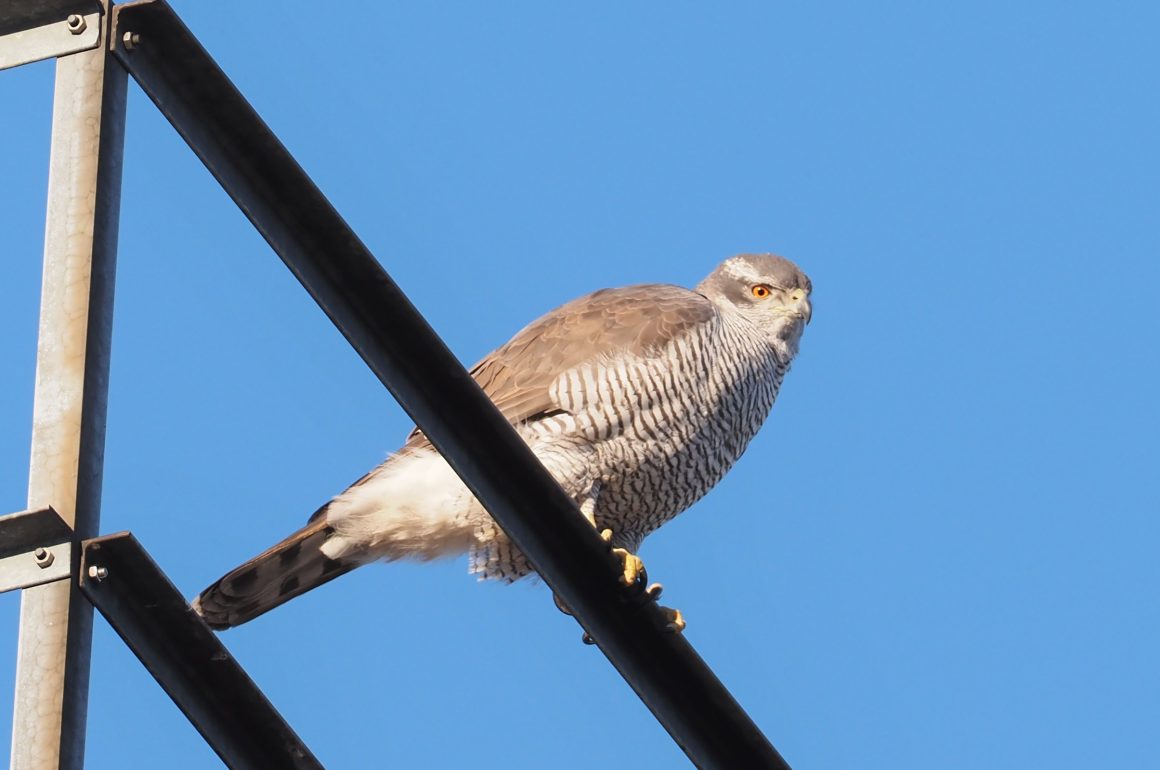
“You can tell by the fact that you can’t see it” – this famous description of the Goshawk by 20th-century zoologist Oskar Heinroth is still widely valid.
The Eurasian Goshawk, Accipiter gentilis, is a forest dweller. It is perfectly adapted to this habitat: its plumage camouflages it, and its body structure allows it to maneuver through dense branches while hunting. This elegant hunter seizes its prey in low flight and pierces it with long, sharp talons. The fact that more and more of these shy birds are turning to cities as their habitat is partly due to the mature trees they provide, but also to the consistently good food supply that the animals find there, even in winter. Another, saddening reason is that birds of prey are not shot or illegally poached in big cities.
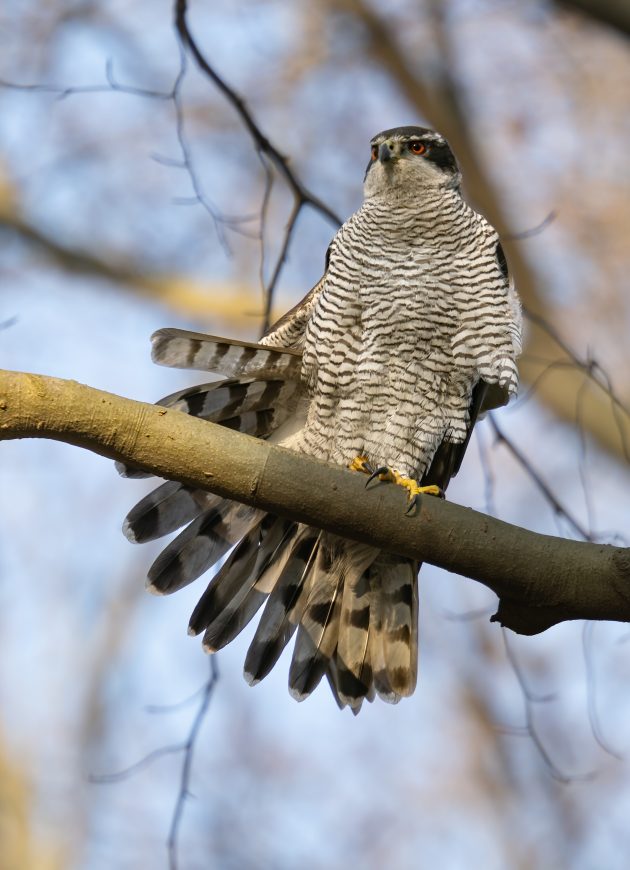
In the 1950s and 60s, the Goshawk virtually disappeared in some parts of Germany due to persecution by chicken and pigeon breeders and the effects of environmental toxins (DDT). Since enjoying a year-round closed season, its population has been on the rise again. While the first urban breeding season in Berlin in the 1980s in the Grunewald forest was still guarded by bird conservationists, the number has steadily increased. Today, Goshawk nests can be found in almost all of the city’s larger parks and even in the courtyards of larger residential complexes. Cemeteries in Berlin are also popular with Goshawks because of their peace and quiet.
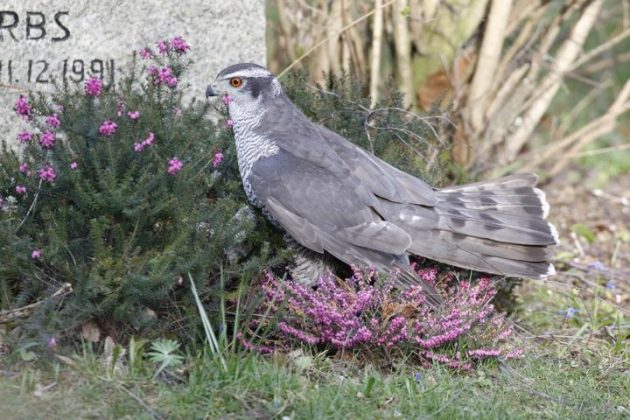
This shy bird, once hunted as a chicken thief, has thus become a “cool” city dweller. This behavior is likely based on an adaptation process: In the city, it is not threatened by persecution, and a pronounced fear of people is no longer necessary. And here, the table is richly laid for it: The Berlin Goshawk prefers to feed on urban pigeons, tens of thousands of which breed in the city every year. Small birds, whether sparrows or budgies, are also on its menu. Even rabbits and red squirrels can fall victim to this skilled hunter.
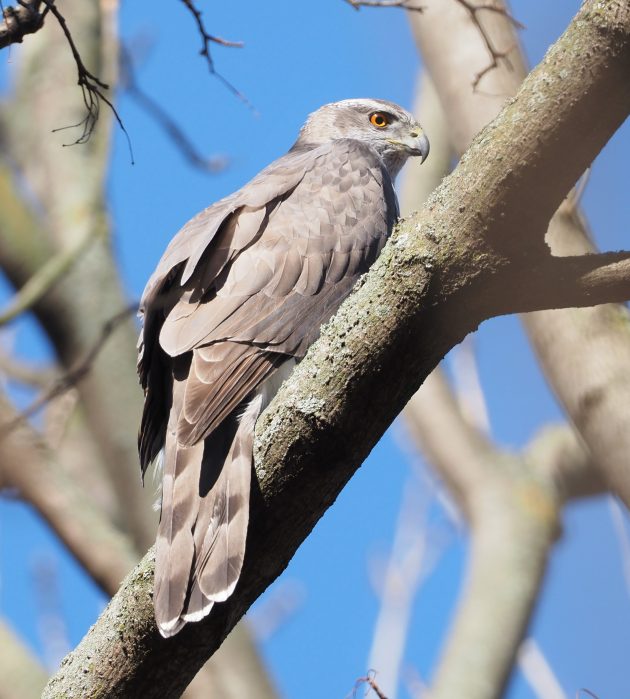
According to current records, there are approximately 11,500 to 16,500 breeding pairs living in Germany. Berlin has one of the highest population densities of Goshawks – at least in Europe – with around 70-90 breeding pairs within the city limits.
Although populations in Germany are not currently threatened across the board, the Goshawk is disappearing from some areas or is rare there. Unfortunately, illegal hunting and trapping of birds of prey, including Goshawks, is still an issue in Germany, as the Goshawk is not popular with some hunters, poultry keepers, and racing pigeon breeders. Every year, police officers and conservationists in Germany confiscate hawk traps – many of them near pigeon keepers.
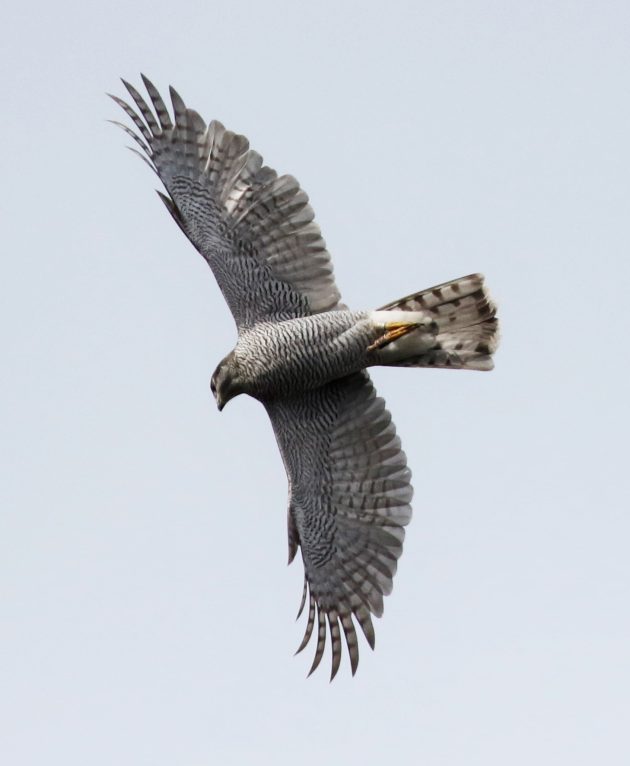
Berlin Goshawks are sedentary birds and stay in the city year-round. Therefore, courtship can begin as early as mid-January. The autonomy phase then begins in August. The first year of life is the most dangerous for the young. Studies show mortality rates of around 40 percent in the first year, and around 30 percent in the second. Once a Goshawk has survived this critical period, it can ultimately live up to 22 years in the wild. “Methuselah,” the oldest Goshawk in Berlin to date, reached the ripe old age of 18. He was accustomed to the presence of humans. The bird, with the deep orange-red eyes typical of older male hawks, sat relaxed when two-legged creatures positioned themselves with their cameras between the graves in the cemetery. He was a star, and an international one at that: The British “Telegraph” reported on him, as did the “BBC Wildlife Magazine.” “Methuselah” was a city dweller from birth. In the spring of 1999, he was ringed as a nestling in a Berlin cemetery until he died, probably as a victim of an approach against a window. “Methuselah” fathered at least 39 young birds in his lifetime.
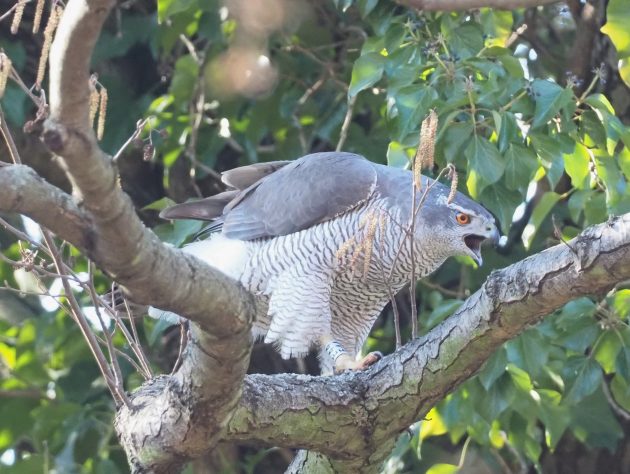
The main cause of death in Berlin continues to be collisions with windows. Large-glazed building facades, which reflect the surroundings, are not recognized as obstacles, and even glass shelters at bus stops can become death traps. The impact can lead to head trauma or fractures, which spell the end for the bird. No longer able to fly, it is no longer able to feed itself.
Infections with trichomonads, transmitted by street pigeons, are another cause of death for Berlin’s urban Goshawks.
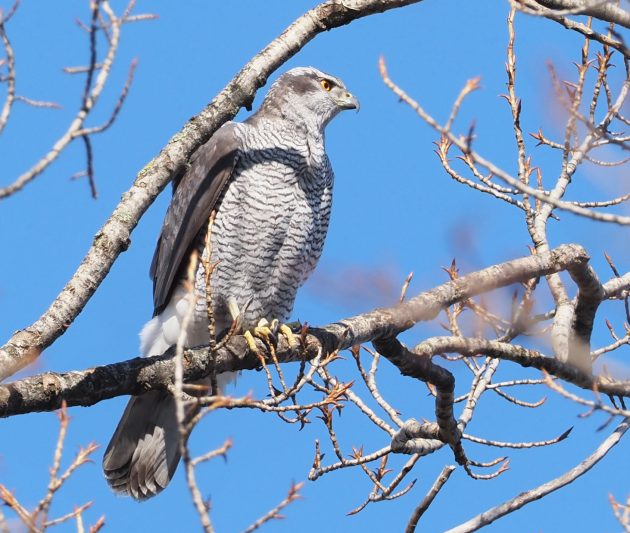
The peak of the courtship season is in March, which is also the best time to visit Goshawks in Berlin to study their behavior or take photos.
Adult Goshawks emit a rapid “ki-ki-ki-ki” alarm call, repeated 10–20 times, in response to threats or when hunting prey. The male has to put in a lot of effort: the female expects a secure nesting site and wants to be wooed with nuptial gifts of neatly plucked street pigeons.
Every year in March, I offer special Goshawk weekends dedicated to the Berlin Goshawks. In small groups of up to 10 people, we visit 2-3 Goshawk territories in Berlin every day to observe and photograph them.
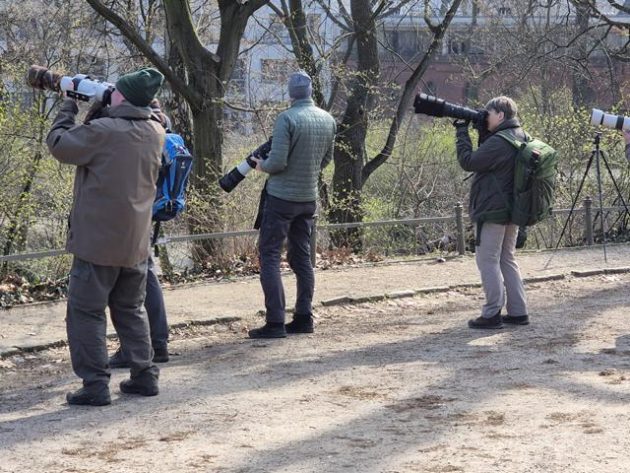
Photo credits: Claudia von Valtier (7 photos)






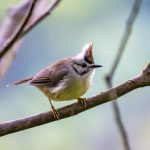


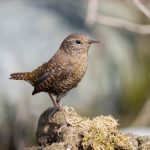

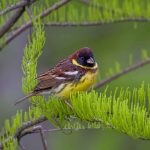

Fascinating article. Here in the UK goshawks are strictly forest birds that are shy and difficult to see. It will be interesting to see if, in time, they change their habits and become park birds, as we have plenty of suitable urban parks, all full of feral pigeons or even ring-necked parakeets.
Ein sehr interressanter und informativer Artikel. Ich habe die Habichte in Berlin durch eine Habichtstour mit Rolf Nessing kennengelernt. Da ich in der Nähe von Berlin wohne bin ich regelmäßig zur Beobachtung in Berlin. Babei konnte ich ihr Verhalten beobachten und auch sehr gute Fotos machen. So nah wie in Berlin kommt man den Habichten sonst nicht. Sie haben sich an die Stadt und die Menschen gewöhnt und kommen dort offensichtlich gut klar. Vielen Dank für die aktuellen Informationen über die Habichte in Berlin und ganz Deutschland
.